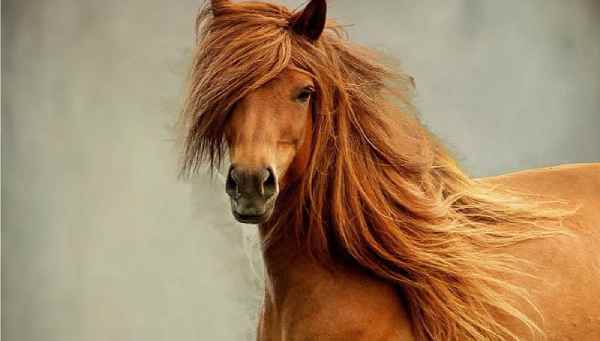If you’ve ever wondered about the animals that possess hooves and what they are called, you’re not alone. Hoofed animals, also known as ungulates, make up one of the largest groups within the animal kingdom.
Table of Contents
Among the diverse range of ungulates, you’ll find well-known species such as donkeys, bison, cows, pigs, hippos, giraffes, and deer, among many others. Hooved animals can be classified into two main categories based on their hoof structure: odd-toed and even-toed hooves.
The majority of hoofed animals are herbivores and occupy the lower levels of the food chain. Some species exist in the wild, while others have been domesticated by humans.
Ungulates hold significant importance not only within their natural habitats but also in relation to human beings. They constitute the largest group of animals that are hunted and domesticated. Without them, wild predators would lack prey, and humans would face a substantial scarcity of vital resources such as milk and meat.
List of Animals With Hooves
Addax

Scientific Name – Addax nasomaculatus
Type of Hoof – Even-toed
The addax, also known as the desert antelope, takes the first spot on our list of hooved animals. Unfortunately, this species is highly endangered. Addaxes typically have a body length of approximately five feet and weigh between 100 and 300 pounds.
In terms of their appearance, addaxes exhibit a grey to brown coat during winter, which transitions to a whitish hue in the summer. Both males and females possess long, twisted horns that can measure up to 4 feet in length.
Their hooves are characterized by their broad shape, flat soles, and robust claws, which prove advantageous for traversing the soft desert sand. Addaxes primarily inhabit the Sahara region, where they can be found living solitarily or in small groups of around four individuals.
During the period of giving birth, female addaxes tend to isolate themselves, accompanied by a male, and rejoin the herd shortly after delivering their young.
Donkey
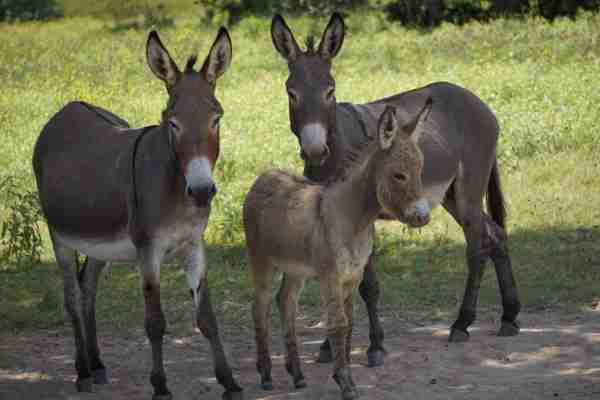
Scientific Name – Equus asinus
Type of Hoof – Odd-toed
The animal in question, also referred to as the African wild ass, belongs to the equine family. It boasts a total body length of approximately seven feet and can weigh up to 500 pounds.
These creatures possess a buff grey coat and exhibit a sparse mane on their heads. In their natural habitat, they inhabit the deserts of East Africa, particularly favouring rocky areas.
When tamed by humans, their primary role revolves around assisting with carrying loads in domestic settings. Donkeys have a varied diet, consuming different types of vegetation, including grasses, bushes, and thorny acacia trees.
Unfortunately, the primary threats to donkeys stem from human activities. Not only are they domesticated for various purposes, but they are also hunted for their meat and used in the production of traditional medicines. Consequently, the dwindling numbers of donkeys classify them as an endangered species, facing rapid population decline.
Bison
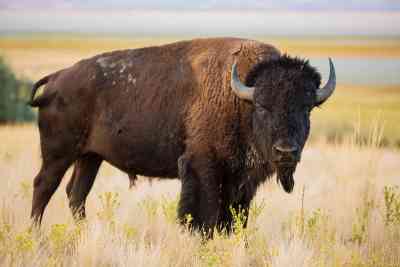
Scientific Name – Bison
Type of Hoof – Even-toed
The American bison, a species teetering on the brink of extinction, faces a severe decline in its wild population. Free-roaming bison have become exceedingly rare.
Nonetheless, there are groups in both America and Canada, whether publicly or privately owned, that maintain bison populations. Globally, there are approximately 500,000 bison, but only 25,000 of them are considered purebred.
The American bison is an impressive creature, with lengths reaching up to 11 feet and weights reaching as high as 2,000 pounds. Their bodies are adorned with hair, which exhibits an uneven distribution across different body regions.
Both male and female bison possess short horns, capable of growing up to two feet in length. Furthermore, they possess hooves with flat soles. Bison possess a remarkable sense of smell, enabling them to detect predators from distances of up to 1 kilometre.
Sheep
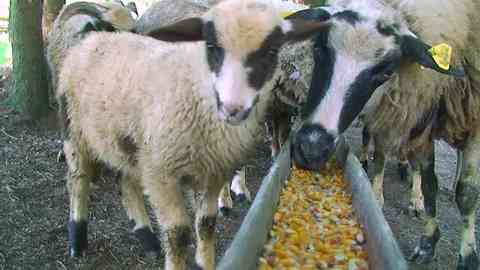
Scientific Name – Ovis aries
Type of Hoof – Even-toed
Sheep hold a prominent position among livestock and were among the earliest animals to be domesticated. With a global population surpassing 1 billion, sheep play a fundamental role in numerous civilizations worldwide.
Belonging to the same family as goats, cattle, and antelopes, sheep are categorized as ruminants, possessing multi-compartmented stomachs. Like their relatives, sheep possess cloven hooves, characterized by a division into two distinct parts.
Maintaining the cleanliness of sheep hooves is of utmost importance. Farmers emphasize that unclean hooves can contribute to various diseases in these animals. Therefore, it is advised to trim and clean their hooves every six to ten weeks to ensure their well-being.
Buffalo
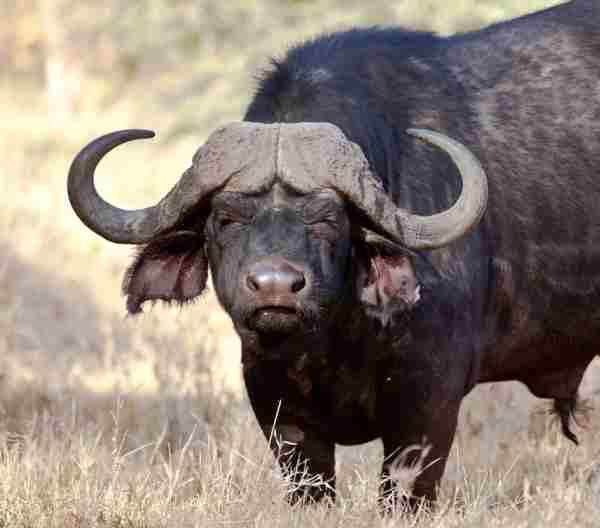
Scientific Name – Bubalus bubalis
Type of Hoof – Even-toed
Also known as African buffaloes, these majestic creatures inhabit the forests and savannahs of Africa. They are characterized as large herd animals, often found in extensive groups consisting of females and their young, which can be up to three years old. On the other hand, males typically prefer solitary living or small groups of approximately four individuals.
Buffaloes, despite belonging to the cow family, surpass their bovine relatives in size. Their bodies can stretch up to lengths of 11 feet and weigh up to 1,500 pounds.
Female buffaloes give birth to a single calf at a time, with a gestation period of around 340 days. At birth, the calf weighs roughly 88 pounds and is usually concealed by the mother during the initial weeks. The mother provides nourishment and protection to the calf before eventually integrating it into the herd.
Male buffaloes typically depart from the herd after three years, either joining bachelor herds or opting for an independent lifestyle. Female buffaloes, on the other hand, tend to remain in their mother’s herd until they reproduce or even longer.
Horse
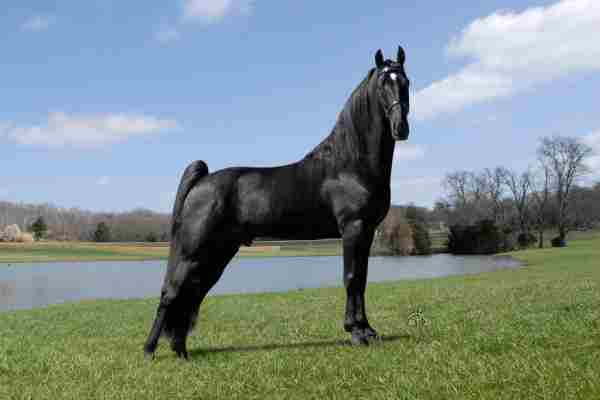
Scientific Name – Equus caballus
Type of Hoof – Odd-toed
Horses, which have been domesticated since 3000 BC, are hoofed mammals. They possess remarkable speed and agility, enabling them to effectively evade predators. Additionally, horses possess the ability to sleep while standing, enhancing their defence against potential threats.
Initially, horses possessed four functional toes. However, through the course of evolution, they gradually lost their side toes, resulting in the current structure where each foot carries a single hoof.
The horse’s hoof is a fascinating and intricate example of nature’s ingenuity. Considering the small size of the hoof and the remarkable swiftness at which horses can move, the level of complexity is truly astonishing.
The primary components of a horse’s hoof include the wall, sole, and frog. For those interested in delving deeper into the functionality and anatomy of the horse’s foot, further information can be found here.
Giant Eland
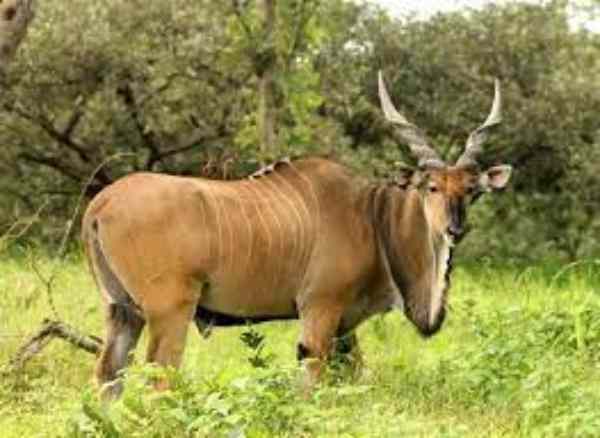
Scientific Name – Taurotragus derbianus
Type of Hoof – Even-toed
Ranking as the largest antelope globally, the giant eland boasts a body length ranging from 7 to 11 feet and weighs between 600 to 2,000 pounds. These magnificent creatures primarily inhabit the savannahs and woodlands of central and west Africa.
Sporting a reddish-brown coat, with males displaying a darker shade, the fur of male giant elands darkens with age, signifying hormone levels within their bodies. A distinctive feature of these striped animals is the presence of 8-12 vertical white lines running along their bodies.
The ears of the giant eland serve as an alert system, signalling danger to other animals. Both males and females possess spiralled horns that form a striking ‘V’ shape, growing up to two feet in length.
Impressively swift, these antelopes can reach speeds of up to 40 mph. Notably, they also exhibit remarkable jumping abilities, clearing distances of up to 4 feet.
As herbivores, giant elands graze on a diverse range of grasses and foliage. In the absence of grass, they adapt by consuming weeds and wild fruits as part of their diet.
Giraffe
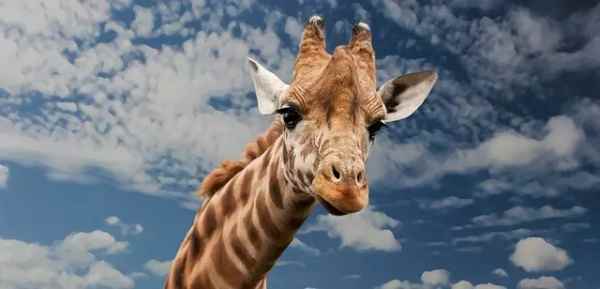
Scientific Name – Giraffa
Type of Hoof – Even-toed
Giraffes inhabit grassland areas with scattered trees across certain parts of Africa, although their presence in the western regions is rare. They typically form small herds consisting of females and their young offspring, while males tend to live solitary lives except during the breeding season.
Giraffes possess long legs and necks, which contribute to their extraordinary height. Their body length spans from 9 to 15 feet, with a shoulder length of approximately 15.5 feet.
Most giraffes display a sandy coat patterned with patches of dark brown and black. Adult males often possess bony horns called ossicones, a distinguishing feature more commonly observed in their gender.
These majestic creatures primarily rely on acacia trees as their primary source of sustenance, thanks to their remarkable height advantage in reaching the leaves. However, during periods of drought, they may resort to feeding on lower shrubs as an alternative food source.
Hippopotamus
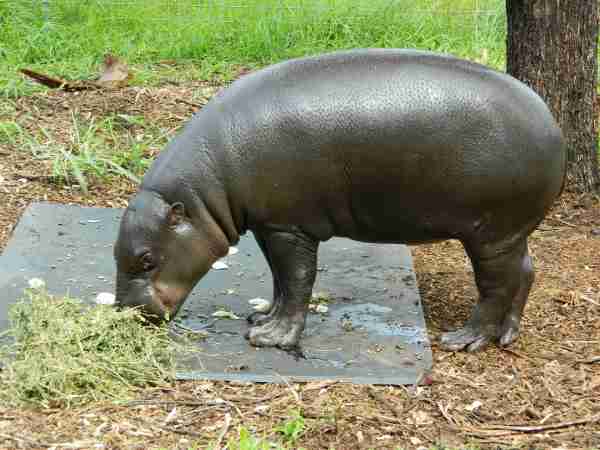
Scientific Name – Hippopotamus amphibius
Type of Hoof – Even-toed
These partially aquatic creatures possess a remarkable length of up to 11 feet and can weigh as much as two tons. Hippos boast hefty bodies with short legs, and each of their toes is adorned with a hoof.
Their heads are sizable and capable of opening up to an impressive width of 150 degrees, revealing their sharp teeth, even though they primarily subsist on plant matter. Positioned atop their heads are their eyes and nose, enabling them to keep a significant portion of their bodies submerged beneath the water’s surface.
Hippos inhabit various regions in Africa, including the east, west, central, and South, where they spend the majority of their days immersed in water. They often emerge during the nighttime to graze on grass and plants in close proximity to rivers or lakes.
Interestingly, despite their significant water-dwelling tendencies, hippos are considered semi-aquatic creatures incapable of swimming due to their massive bodies and dense bones.
Impala

Scientific Name – Aepyceros melampus
Type of Hoof – Even-toed
These antelope-like creatures are of moderate size within the antelope family. With a length of approximately five feet, they can weigh up to 150 pounds. Impalas possess a fawn-coloured coat, often adorned with black stripes on their lips and tail.
Renowned for their vocal nature, impalas communicate in various ways. During mating, males emit loud grunts, while the young calves tend to produce bleating sounds. Both males and females utilize loud snorts as a warning signal when sensing danger.
Impalas primarily inhabit the grasslands of Africa, frequently found in close proximity to watering holes. Unfortunately, this proximity also exposes them to the threat of crocodiles, one of their most significant predators.
Herds of impalas typically comprise females and their offspring, occupying large territories that they fiercely defend. Adult males, on the other hand, tend to form smaller herds of approximately 30 individuals, although they do not exhibit territorial behaviour.
Occasionally, they may intermingle with female herds, particularly during the mating season.
Cow
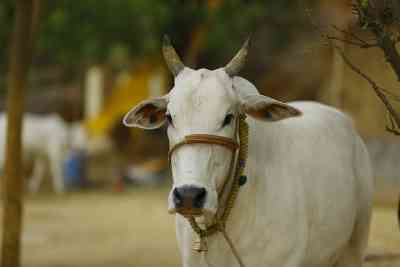
Scientific Name – Bos taurus
Type of Hoof – Even-toed
Similar to many domesticated herbivores, cows possess cloven hooves, which consist of two separate “claws.” These broad hooves play a vital role in safeguarding the bones and nerves housed within the animal’s feet.
Moreover, cows’ hooves enable them to traverse various terrains, including wet fields, forests, and muddy pastures, with relative ease.
Much like human nails, cows’ hooves continuously grow throughout their lives. Over the course of a year, the size of their hooves can increase by up to one inch.
To prevent potential health issues, farmers regularly trim the hooves of cows. As a general guideline, adult cows require hoof trimming approximately every six months. This practice helps maintain the overall well-being and mobility of the animals.
Pig
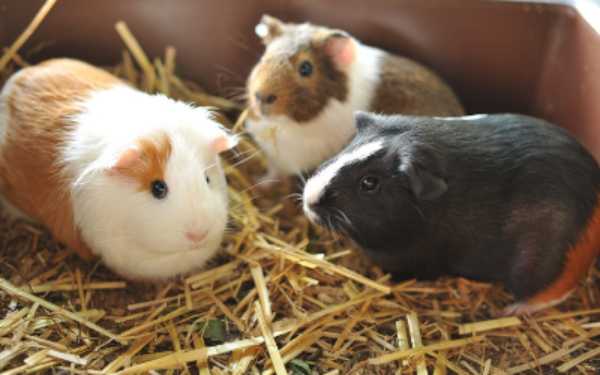
Scientific Name – Sus
Type of Hoof – Even-toed
Concluding our list of hoofed animals, we have the pig. These iconic domestic creatures hold immense significance for humanity.
Pigs possess hooves that are also divided into two sections, granting them enhanced stability while traversing rugged and uneven landscapes. Additionally, their hooves serve as a means of self-defence, enabling them to kick potential threats.
Similar to other hoofed animals, a pig’s hooves are composed of keratin, a material that lends them both durability and sensitivity. Like other livestock animals, regular hoof trimming is necessary for pigs to prevent potential infections.
It’s worth noting that even-toed hooves, like those found in domestic pigs, are also present in their wild counterparts.
Final Words
Hoofed animals are an incredibly diverse group, with even-toed and uneven-toed species presenting a range of adaptations. The even-toed species typically feature between two and four toes, whereas the uneven-toed have only one or three. These differences are a direct result of each species’ individual needs and environment.
For example, camels’ hooves have been reduced to a small nail-like tip capable of withstanding the hot, dry desert terrain they call home. While the majority of hoofed animals are herbivores, there are always exceptions, with omnivores such as pigs standing out from the crowd. We hope this brief overview has built your appreciation of ungulates.
Reference:
- https://www.britannica.com/browse/Hoofed-Mammals
- https://wdfw.wa.gov/sites/default/files/2020-11/hoovesandherds.pdf
- http://www.ikonet.com/en/visualdictionary/animal-kingdom/ungulate-mammals/examples-of-hoofs.php

Zahra Makda
Growing up enjoying the beauty of my village, a good passion for nature developed in me from childhood. Following my passion for the natural world, I have chosen zoology for my graduation, during my undergraduate degree, I participated in many nature trails, bird watching, rescues, training for wildlife conservation, workshop, and seminars on biodiversity. I have a keen interest in invertebrate biology, herpetology, and ornithology. Primary interests include studies on taxonomy, ecology, habitat and behavior.

